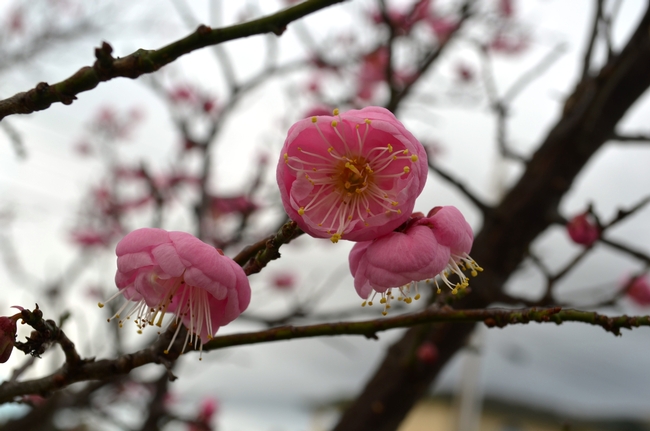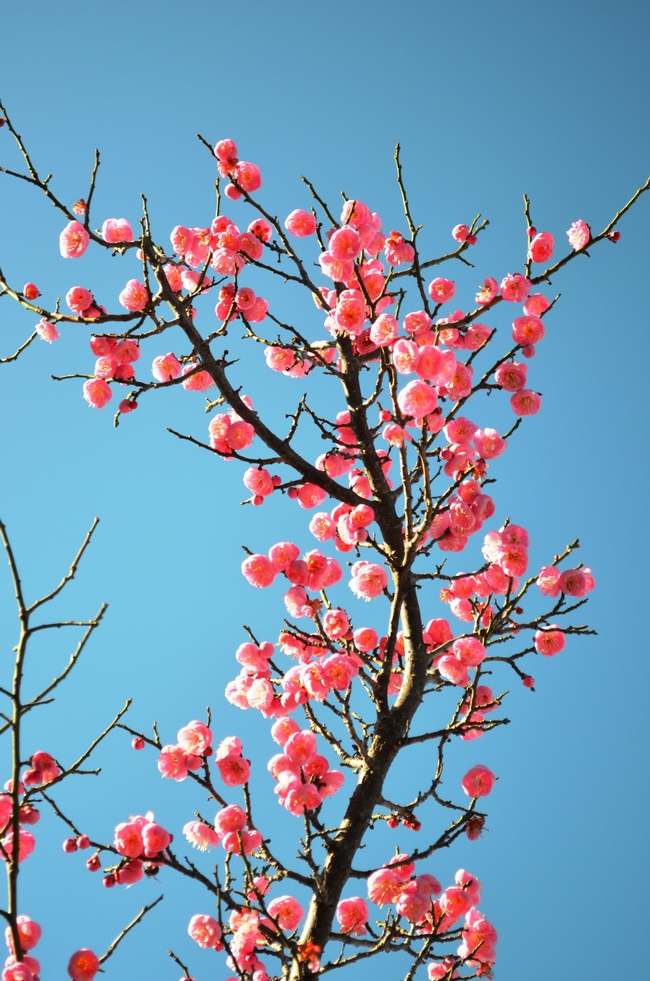Japanese Flowering Apricot
When we first purchased our current home, before we even moved in, we stopped by a garden nursery’s going out-of-business sale. A salesclerk caught us eyeing a Japanese flowering apricot (Prunus mume) and burst out “I can’t believe we have one of those left, those are beautiful trees!” Impressed by the salesclerk’s enthusiasm, and frankly, the deeply discounted price, we purchased the tree. It would be the centerpiece in our small front yard. Every year since then, I have referred to it as “that stupid tree.” Each August, I stand before the tree and scold it for its wind-whipped shape, its failure to develop any interesting form, and its dull, sickly-looking leaves, and I threaten to chop it down and replace it.
But then, inertia sets in. Before I know it, the cold, bleak days of January have arrived (at least they do in normal years). And my Japanese flowering apricot puts on such a spectacular, fragrant, flowering show that it earns its reprieve . . . at least until the following August.
According to the Sunset Western Garden book, the Japanese flowering apricot will develop into a “gnarled picturesque tree,” 20 feet tall and wide, suitable for small gardens or near walkways. The blossoms form on leafless branches in the depths of winter—midwinter to early spring—when little else is blooming. Most sources describe the scented blossoms as having a clean, spicy fragrance. To me, my tree smells like glorious cinnamon-spice explosion—I can smell it nearly half-way down the block! Depending on the cultivar, the petals range from white to pink to red, with single or double blooms. The tree produces yellow-green, 1-inch fruit, which can be edible if prepared properly, but are generally considered inedible in the United States. You can see cultivars at both UC Davis Arboretum and the UC Berkeley Botanical Garden.
In retrospect, my Japanese flowering apricot may have been happier if I hadn’t planted it in a hot, windy, location in heavy clay soil (despite our efforts to amend the soil). After 12 years, it’s neither “gnarled” nor “picturesque” by any stretch of the imagination. But in midwinter, on a grey, rainy day, I will put on a coat and sit on our front porch, just to breath in its fragrance and enjoy the rare spot of color for this time of year, and I will be glad of our impulse buy from years ago.

Flowering apricot up close. (photos by Erin Mahaney)

Branch loaded with apricot flowers.
Comments:
Thanks for sharing it with us.
http://www.a1mumbaiflowers.com/">Mumbai flowers delivery


Posted by Patricia Brantley on February 16, 2012 at 4:58 PM